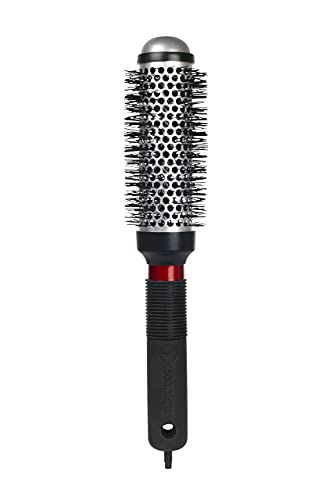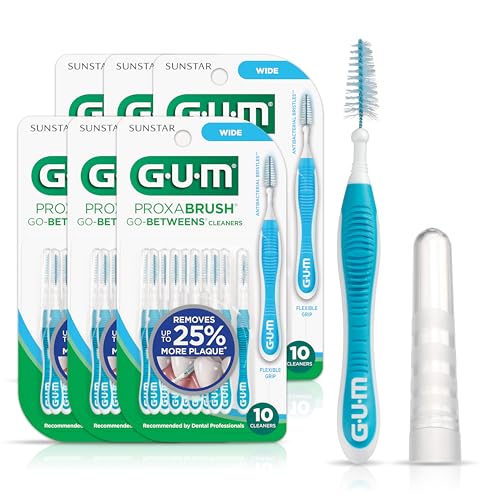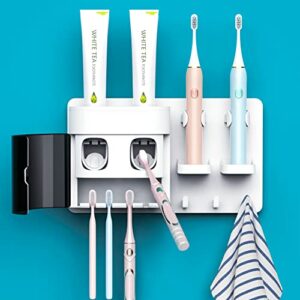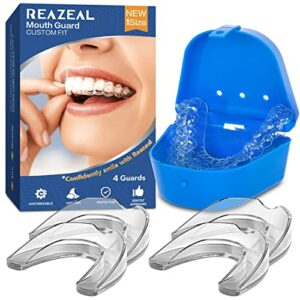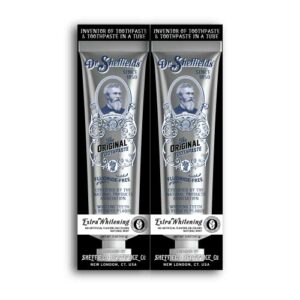Dear readers,
We understand that taking care of your oral health can sometimes feel like a daunting task. It’s easy to get caught up in the hustle and bustle of everyday life and neglect the small but crucial aspect of proper brushing technique. That’s why we are here to extend our empathy and offer you some valuable tips for better oral care. In this blog post, we will delve into the world of brushing techniques, unraveling the secrets to achieving a sparkling smile and maintaining a healthy mouth. So, let’s embark on this journey together and discover the importance of brushing technique in ensuring optimal oral hygiene.
Achieve a Healthy Smile with Proper Brushing Technique
The Importance of Proper Brushing Technique
Maintaining good oral health is essential for a healthy smile and overall well-being. One of the most fundamental aspects of oral hygiene is proper brushing technique. In this blog section, we will explore why having a correct brushing technique is crucial for removing plaque, preventing cavities, and keeping your gums healthy.
Removing Plaque Effectively
Plaque, a sticky film of bacteria, forms constantly on our teeth. If not removed regularly, it can lead to tooth decay, gum disease, and bad breath. Here’s how a proper brushing technique helps in removing plaque effectively:
- Choosing the right toothbrush: Opt for a soft-bristled toothbrush that can easily reach all areas of your mouth, including the difficult-to-reach spots.
- Positioning the toothbrush: Hold your toothbrush at a 45-degree angle to your gums.
- Brushing technique: Use small circular motions to brush each tooth gently. Ensure you cover all surfaces of your teeth, including the outer, inner, and chewing surfaces.
- Brushing duration: Brush your teeth for a minimum of two minutes, twice a day. This allows ample time to thoroughly clean your mouth.
Preventing Cavities
Cavities, or dental caries, are caused by the acids produced by bacteria present in plaque. Proper brushing technique plays a crucial role in preventing cavities:
- Reaching all areas: A correct brushing technique ensures that you clean all tooth surfaces, including those hard-to-reach areas where food particles and plaque tend to accumulate.
- Effective plaque removal: By brushing every nook and cranny of your mouth, you can effectively remove plaque and minimize the risk of cavities.
- Use of fluoride toothpaste: Fluoride toothpaste strengthens the enamel, making it more resistant to acid attacks. Ensure you use a pea-sized amount of fluoride toothpaste while brushing.
Keeping Your Gums Healthy
Neglecting your gums can lead to gum disease, which is the leading cause of tooth loss in adults. A proper brushing technique is vital for keeping your gums healthy:
- Gentle brushing: Avoid aggressive brushing as it can damage your gums and cause them to recede. Instead, be gentle and use small circular motions.
- Massaging the gums: Brushing should not only focus on the teeth but also include gentle massaging of the gum line. This stimulates blood flow and maintains healthy gums.
- Removing plaque along the gum line: Plaque tends to accumulate along the gum line, causing irritation and inflammation. Proper brushing technique ensures that plaque is removed from this area, reducing the risk of gum disease.
Choosing the Right Toothbrush and Toothpaste
Selecting the right toothbrush and toothpaste is crucial for effective brushing. Here are some tips to help you make the right choices:
- Toothbrush:
- Opt for a toothbrush with soft bristles to avoid damaging your gums and tooth enamel.
- Consider the size of the toothbrush head. It should comfortably fit into your mouth and reach all areas of your teeth.
- Electric toothbrushes are a great option as they provide consistent and thorough cleaning.
- Toothpaste:
- Look for toothpaste that contains fluoride. Fluoride helps strengthen tooth enamel and prevents tooth decay.
- Choose a toothpaste flavor that you enjoy to make brushing more pleasant.
Correct Brushing Technique
Using the correct brushing technique is vital to ensure effective cleaning. Follow these steps for a proper brushing motion:
- Hold your toothbrush at a 45-degree angle towards your gum line.
- Gently move the brush back and forth in short, circular motions.
- Pay attention to all surfaces of your teeth, including the outer and inner surfaces, as well as the chewing surfaces.
- Don’t forget to brush your tongue to remove bacteria and freshen your breath.
Duration and Frequency
Brushing for the right amount of time and frequency is essential for maintaining good oral hygiene. Here’s what you should keep in mind:
- Duration:
- Brush your teeth for at least two minutes each time to ensure thorough cleaning.
- Use a timer or play a song to help you keep track of time.
- Frequency:
- Brush your teeth at least twice a day – once in the morning and once before bed.
- Consider brushing after consuming sugary or acidic foods to minimize their effects on your teeth.
Additional Tips for Effective Brushing
Here are some extra tips to enhance your brushing routine:
- Flossing:
- Remember to floss daily to clean the spaces between your teeth that a toothbrush can’t reach.
- Rinsing:
- Rinse your mouth with water after brushing to remove any lingering toothpaste or debris.
- Replace your toothbrush:
- Replace your toothbrush every three to four months or sooner if the bristles become frayed.
- Regular dental check-ups:
- Schedule regular dental check-ups to ensure your oral health is in top shape and to address any potential issues.
Key Benefits of Effective Brushing
By following these tips for effective brushing, you can enjoy numerous benefits:
- Reduces the risk of tooth decay and gum disease.
- Helps maintain fresh breath and a clean mouth.
- Prevents plaque buildup, which can lead to tartar and cavities.
- Enhances the overall health of your teeth and gums.
Remember, effective brushing is a crucial part of your oral hygiene routine. By following these tips, you can ensure that you are giving your teeth the care they deserve.
Common Brushing Mistakes to Avoid
Maintaining good oral hygiene is essential for healthy teeth and gums. However, many people unknowingly make brushing mistakes that can compromise their oral health. In this blog post, we will highlight some common brushing mistakes and explain why they should be avoided. We will also provide guidance on how to correct these mistakes and achieve optimal oral health.
Mistake 1: Brushing Too Hard
Brushing your teeth vigorously may seem like a good way to ensure a thorough clean, but it can actually be harmful to your gums and tooth enamel. Brushing too hard can lead to gum recession, tooth sensitivity, and even enamel erosion.
Tips to avoid this mistake:
- Use a soft-bristled toothbrush to minimize the risk of damaging your gums and enamel.
- Apply gentle pressure and use small, circular motions to clean your teeth effectively.
- Let the bristles do the work; there’s no need for excessive force.
Mistake 2: Insufficient Brushing Time
In our busy lives, it’s easy to rush through our oral hygiene routine. However, inadequate brushing time can leave behind plaque and bacteria, increasing the risk of cavities and gum disease.
Tips to avoid this mistake:
- Brush your teeth for a minimum of two minutes, twice a day.
- Divide your mouth into quadrants (upper right, upper left, lower right, lower left) and spend at least 30 seconds on each quadrant.
- Consider using a timer or an electric toothbrush with a built-in timer to ensure you brush for the recommended duration.
Mistake 3: Neglecting the Gumline and Back Teeth
Many people focus solely on brushing the front surface of their teeth, neglecting the gumline and the back teeth. Neglecting these areas allows plaque and bacteria to build up, leading to gum disease and tooth decay.
Tips to avoid this mistake:
- Angle your toothbrush at a 45-degree angle towards the gumline, ensuring the bristles reach both the teeth and gums.
- Pay attention to the back teeth, as they are often overlooked. Use gentle, circular motions to clean these areas effectively.
Mistake 4: Using an Old or Worn-out Toothbrush
Using an old or worn-out toothbrush can be ineffective in removing plaque and bacteria from your teeth. Additionally, frayed bristles can damage your gums and enamel.
Tips to avoid this mistake:
- Replace your toothbrush every three to four months or sooner if the bristles become frayed.
- Consider using an electric toothbrush, as they often have replaceable brush heads that indicate when they need to be changed.
Mistake 5: Not Rinsing Properly
After brushing, many people rinse their mouths vigorously with water, thinking it will remove all the toothpaste. However, this can wash away the beneficial fluoride in toothpaste, compromising its effectiveness.
Tips to avoid this mistake:
- After brushing, spit out the excess toothpaste, but avoid rinsing immediately.
- Wait at least 30 minutes before eating or drinking to allow the fluoride to penetrate and strengthen your tooth enamel.
By avoiding these common brushing mistakes, you can improve your oral health and reduce the risk of dental problems. Remember to be gentle, thorough, and consistent in your brushing routine. Your teeth and gums will thank you!
Additional Resources:
- Choosing the Right Toothbrush
- Proper Brushing Technique
- Electric vs. Manual Toothbrush: Which is Right for You?
Disclaimer: The information provided in this blog post is intended for educational purposes only and should not replace professional dental advice. Please consult a dentist or oral care professional for personalized recommendations.
Other Factors to Consider for Better Oral Care
Maintaining good oral health goes beyond just brushing your teeth. While brushing is undoubtedly essential, there are other factors that contribute to overall oral care. In this section, we will discuss the importance of flossing, using mouthwash, and regular dental check-ups. By incorporating these practices into your daily routine, you can ensure a healthy mouth and prevent potential dental issues.
Flossing: Reaching Those Hard-to-Reach Areas
Brushing alone cannot remove all the plaque and food particles that get trapped between your teeth and along the gumline. This is where flossing comes in. Flossing helps remove plaque and debris from areas that your toothbrush cannot reach, preventing the buildup of harmful bacteria and reducing the risk of gum disease and cavities.
Benefits of flossing:
- Reduces the risk of gum disease and tooth decay
- Prevents bad breath
- Improves overall oral hygiene
Using Mouthwash: An Added Layer of Protection
Mouthwash is an excellent addition to your oral care routine. It can help kill bacteria, freshen your breath, and provide an extra layer of protection against gum disease and tooth decay. When choosing a mouthwash, look for one that contains fluoride, as it helps strengthen the tooth enamel and prevents cavities.
Benefits of using mouthwash:
- Kills bacteria that cause bad breath
- Freshens breath
- Provides an extra layer of protection against dental issues
Regular Dental Check-ups: The Key to Preventive Care
Regular dental check-ups are crucial for maintaining good oral health. Even if you diligently follow a proper oral care routine, there may be underlying dental issues that only a professional can detect. Dentists can identify early signs of cavities, gum disease, oral cancer, and other oral health problems before they become more severe.
Benefits of regular dental check-ups:
- Early detection and treatment of dental issues
- Professional cleaning to remove stubborn plaque and tartar
- Customized oral care advice based on your specific needs
Comparison Table: Brushing, Flossing, Mouthwash, and Dental Check-ups
| Brushing Flossing Mouthwash Dental Check-ups | ||||
|---|---|---|---|---|
| Importance | Essential for oral care | Removes plaque and debris | Provides extra protection | Detects dental issues early |
| Benefits | Removes food particles | Reduces risk of gum disease and tooth decay | Kills bacteria causing bad breath | Early detection and treatment |
| Frequency | Twice a day | Once a day | After brushing | Recommended every 6 months |
| Technique | Circular or back-and-forth motions | Gently slide the floss between teeth | Rinse for 30 seconds, then spit out | Examination, cleaning, and consultation |
| Additional Notes | Use a soft-bristled toothbrush | Use a clean section of floss for each tooth | Choose a mouthwash with fluoride | Inform your dentist about any concerns or pain |
By incorporating these other factors into your oral care routine, you can significantly improve your overall oral health. Remember, it’s never too late to start taking better care of your teeth and gums. So why not give flossing, using mouthwash, and scheduling regular dental check-ups a try? Your smile will thank you!
Improving your brushing technique for a healthier smile
In conclusion, we understand that maintaining good oral care can be challenging, but by implementing these tips, you can enhance your brushing technique and ultimately improve your oral health. Remember, it’s not just about brushing; flossing, using mouthwash, and visiting your dentist regularly are all essential components of a complete oral care routine. We hope that this blog post has provided you with valuable insights and practical advice to help you take better care of your teeth and gums. Let’s commit to making our oral health a priority and enjoy the benefits of a healthy smile.


